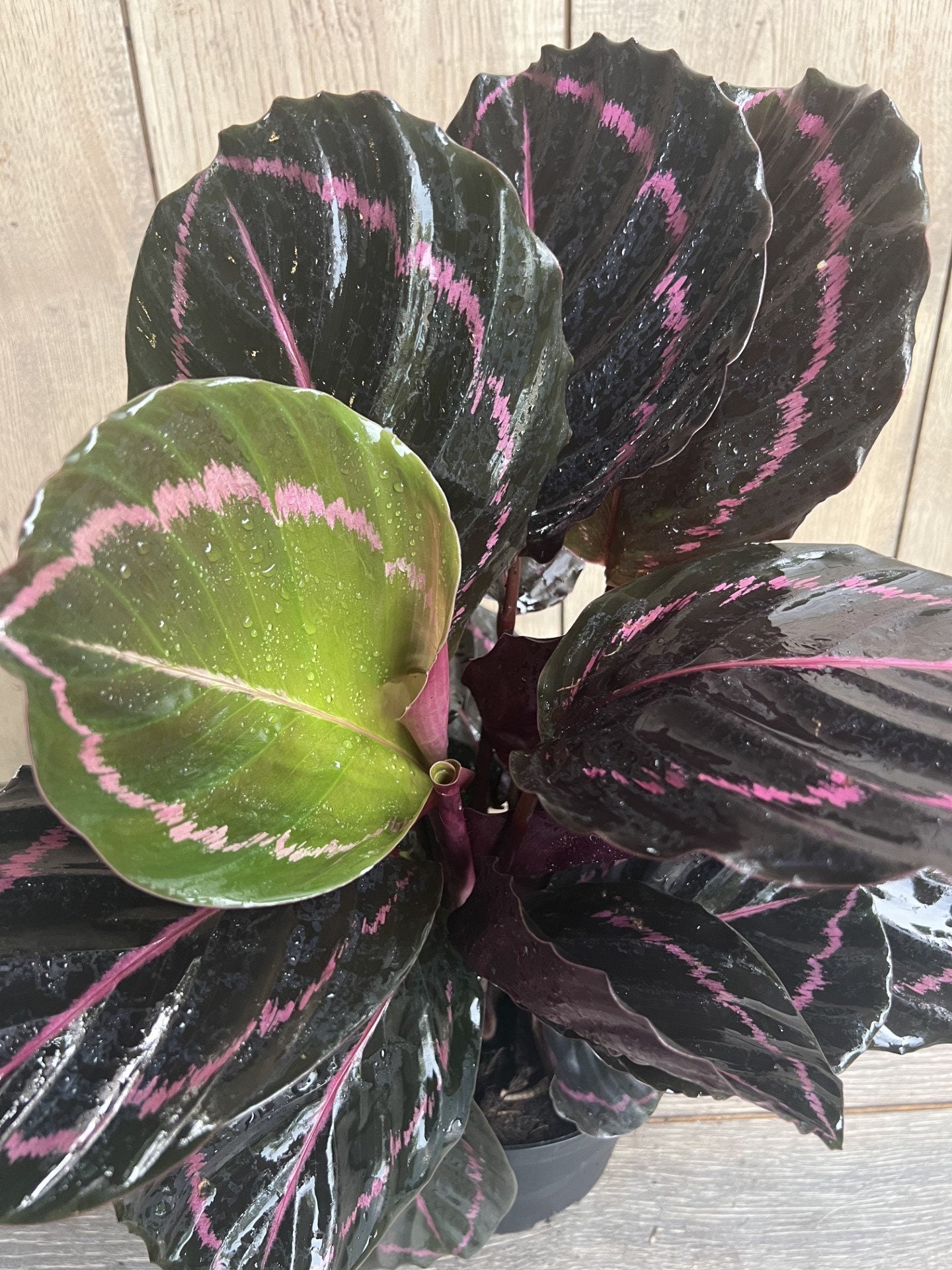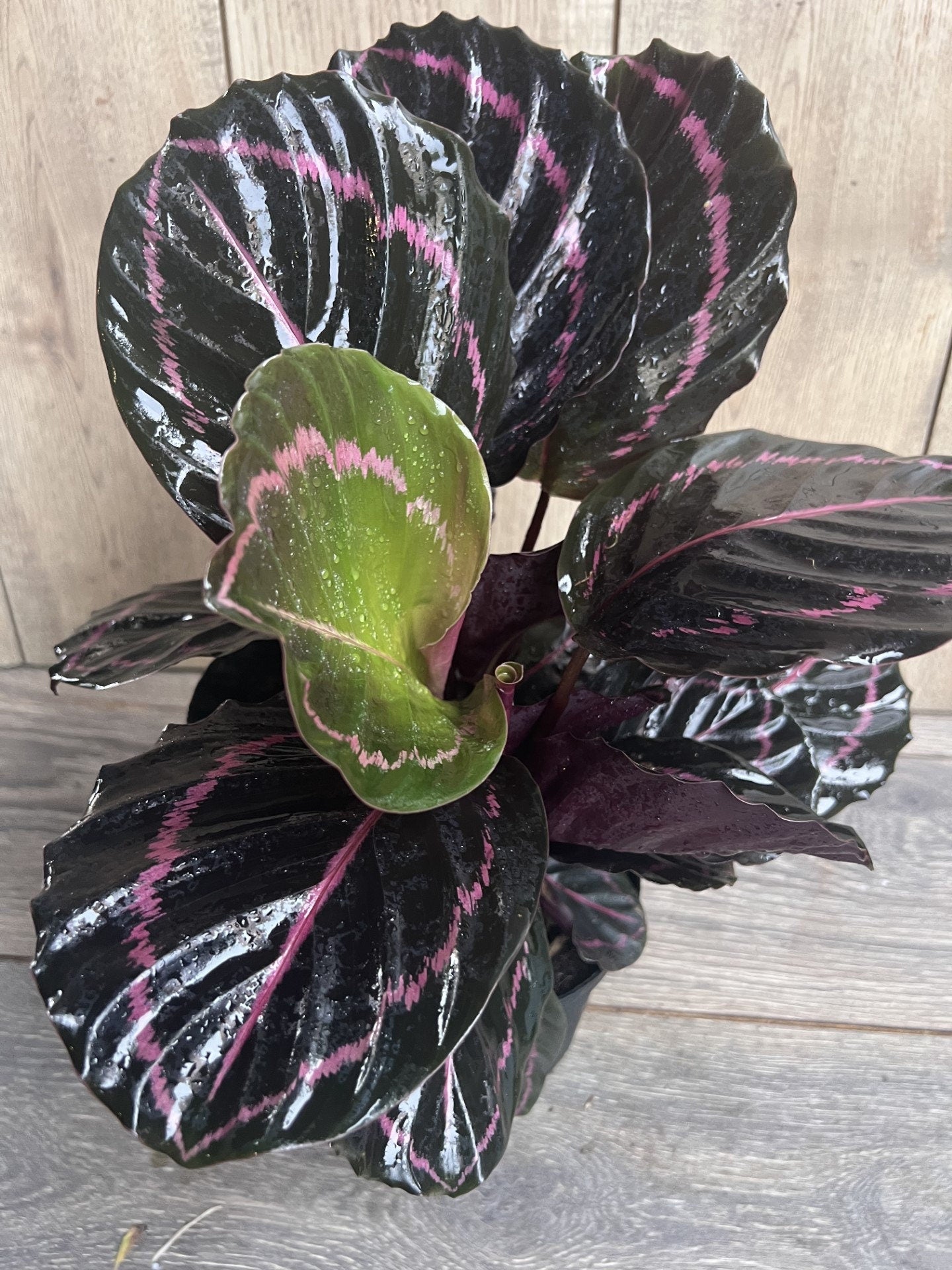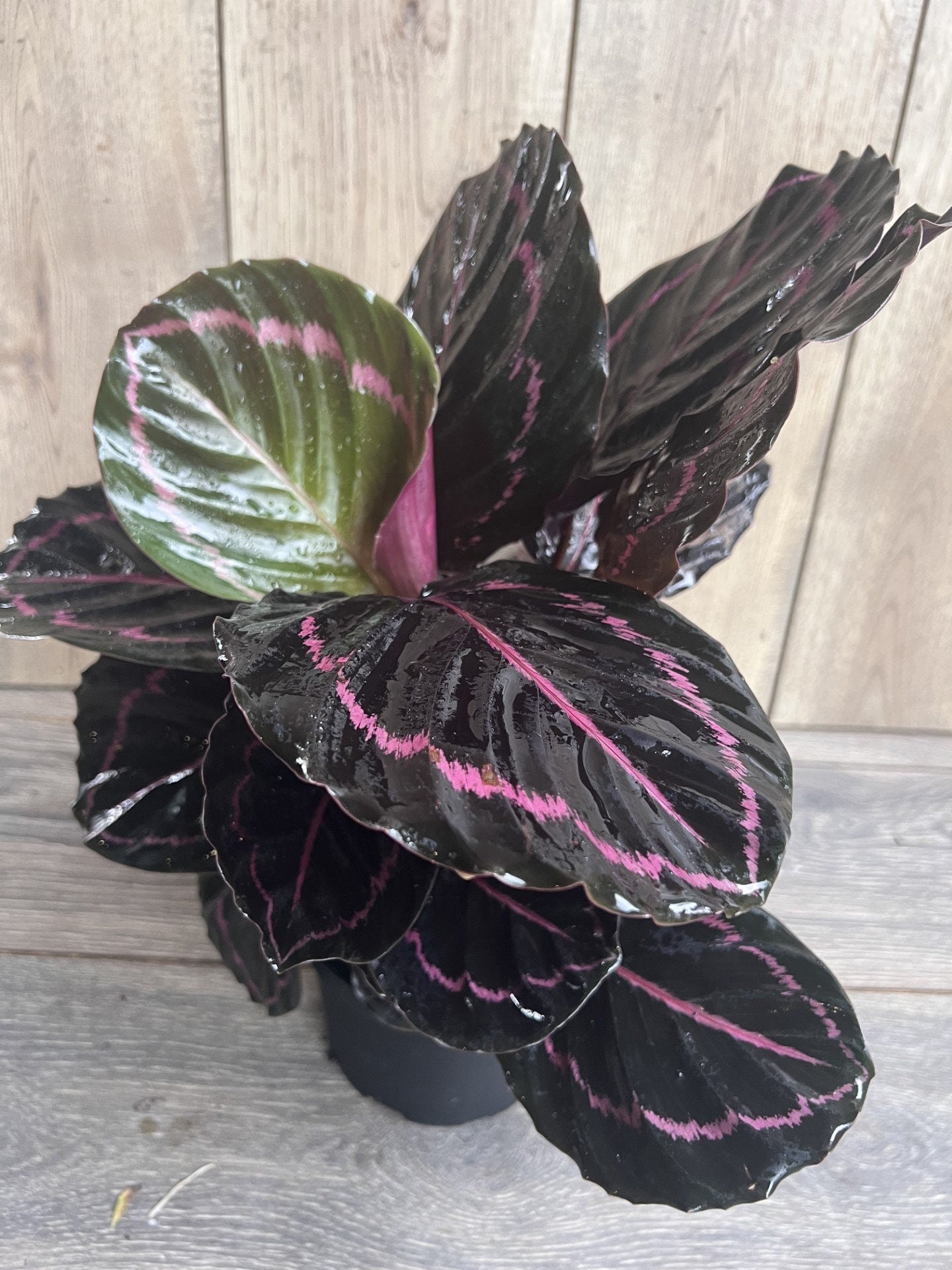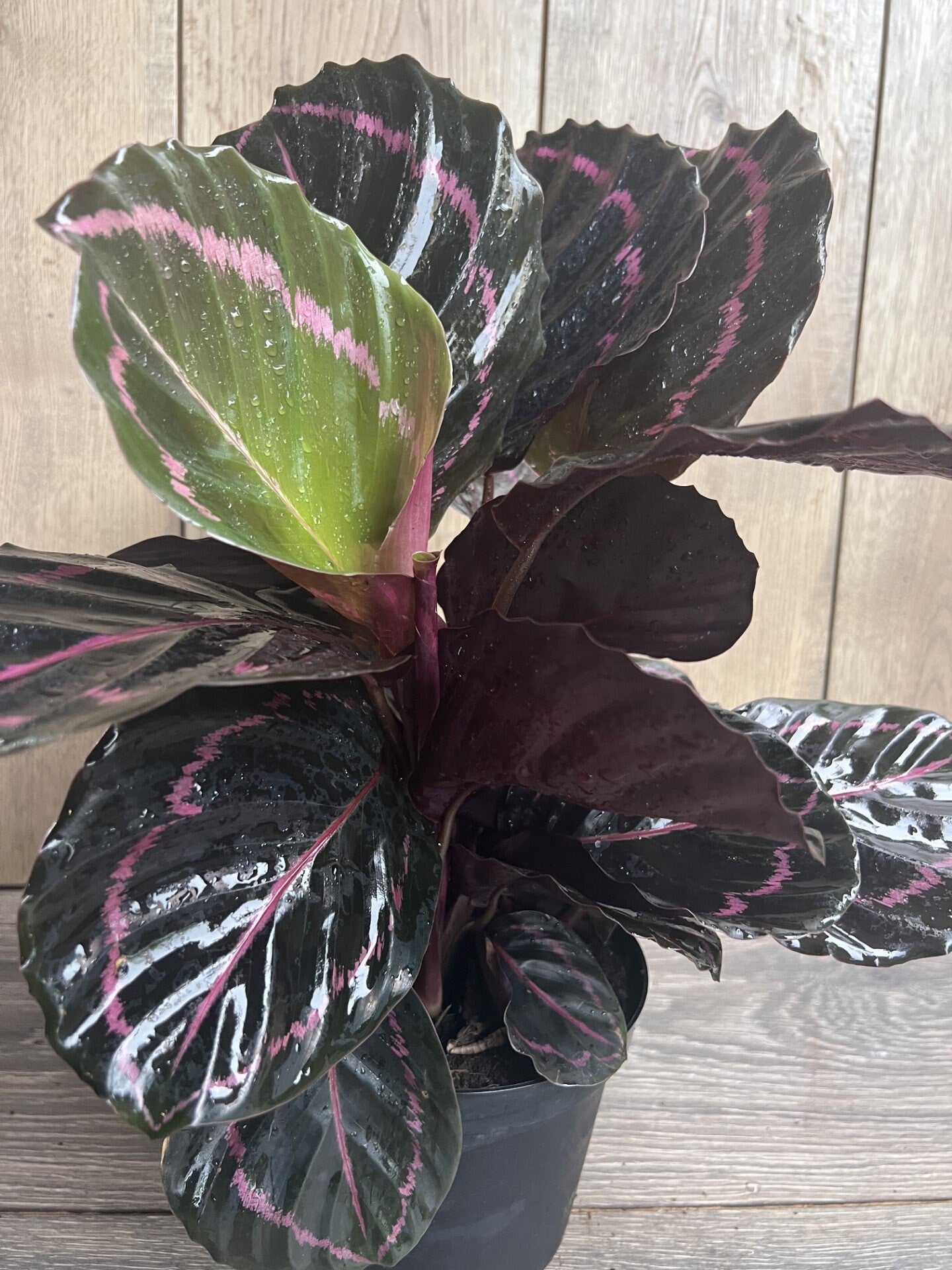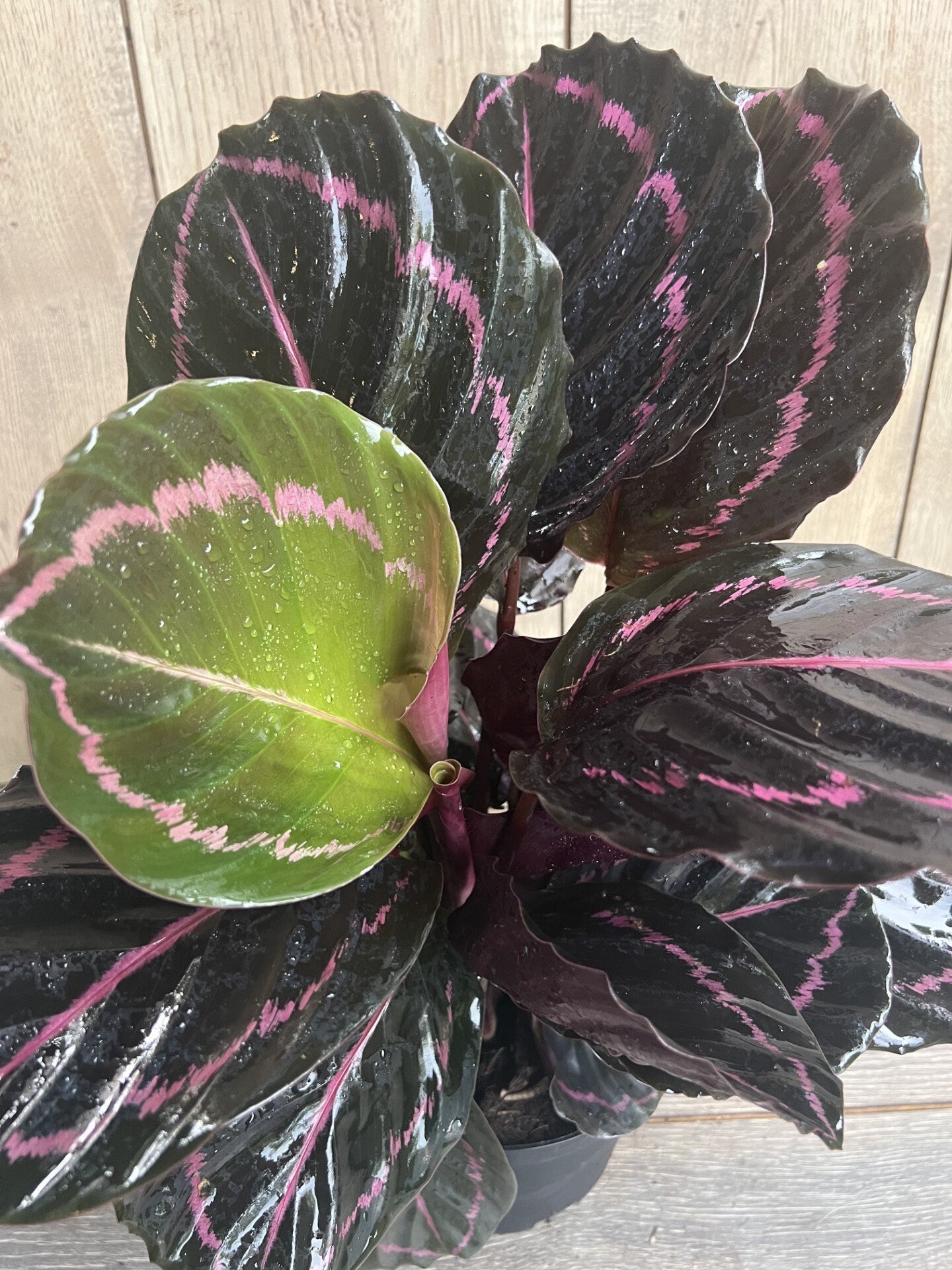1
/
of
6
Calathea Dottie in 6" Pot, prayer plant
Calathea Dottie in 6" Pot, prayer plant
Regular price
$23.36 USD
Regular price
$31.14 USD
Sale price
$23.36 USD
Unit price
/
per
Shipping calculated at checkout.
Couldn't load pickup availability
You will receive 1 Calathea Dottie in a 6" pot, similar to the pictures.
About the Plant
Calathea Dottie (Calathea roseopicta 'Dottie') is a stunning tropical plant known for its striking dark green leaves with vivid purple-pink veins. This variety of the Calathea family is prized for its vibrant coloration and relatively low-maintenance care requirements. Like its tropical relatives, the Calathea Dottie thrives with proper attention to light, humidity, and watering, making it an eye-catching addition to any indoor garden or living space.
Light Requirements
- Bright, Indirect Light: Prefers bright, indirect sunlight to maintain its striking leaf coloration.
- Avoid Direct Sun: Direct sunlight can scorch its leaves and cause its vivid colors to fade.
- Low Light Tolerance: While it can tolerate low light, the leaves may lose their vibrant pink veins in dim conditions.
Watering
- Consistent Moisture: Keep the soil lightly moist but not soggy. Avoid letting it dry out completely.
- Water Quality: Use filtered water or let tap water sit out for 24 hours to dissipate harmful chlorine and fluoride that can turn leaf tips brown.
- Watering Frequency: Water about once a week during the growing season, adjusting based on humidity and temperature.
Temperature & Humidity
- Ideal Temperature: Thrives between 65°F to 80°F (18°C to 27°C).
- Cold Sensitivity: Avoid exposing it to temperatures below 50°F (10°C) and protect it from drafts or air conditioners.
- High Humidity is Key: A minimum humidity of 50-60% is ideal. Boost humidity by misting the leaves, grouping plants, or placing the pot on a tray of water and pebbles.
Soil
- Well-Draining & Moisture-Retentive: Prefers light, airy soil that retains moisture without becoming waterlogged.
-
Recommended Mix:
- Peat moss or coconut coir for moisture retention.
- Perlite or pine bark for drainage and aeration.
- Optional vermiculite can be added for extra moisture retention.
Fertilizing
- During Active Growth: Fertilize every 4-6 weeks with a diluted, balanced liquid fertilizer (e.g., 10-10-10) during spring and summer.
- Winter Care: Reduce or stop fertilizing in fall and winter when the plant slows growth.
- Organic Options: Fish emulsion or worm castings are excellent natural fertilizer choices.
Pruning & Maintenance
- Regular Trimming: Remove any dead, yellowing, or damaged leaves to maintain the plant's appearance.
- Cleaning Dust: Gently wipe leaves with a damp cloth every few weeks to ensure it can photosynthesize properly.
Repotting
- Every 1-2 Years: Repot the plant when it outgrows its pot or shows signs of poor drainage.
- Optimal Time: Spring or early summer is the best time to repot as the plant is actively growing.
- Root Pruning: If roots are circling the pot bottom, trim them gently during repotting.
Pests & Problems
-
Common Pests:
- Spider Mites: Look for fine webs and speckled leaves.
- Mealybugs: Small, cotton-like spots on the plant.
- Aphids: Small, soft-bodied insects that can cause leaf distortions.
- Treatment: Spray the undersides of leaves with neem oil, insecticidal soap, or a diluted water and dish soap mixture.
Common Issues
- Brown Leaf Edges or Curling: Often caused by low humidity, inconsistent watering, or poor air circulation.
- Yellowing Leaves: May result from overwatering, nutrient deficiency, or root rot.
- Leaf Spotting: Could indicate excess moisture, exposure to cold drafts, or misting too much.
Toxicity
- Non-Toxic to Pets: Calathea Dottie is safe for cats and dogs, making it a great addition to homes with pets.
With proper care, Calathea Dottie will remain a show-stopping indoor plant, showcasing its dramatic purple-pink veins and lush green foliage.
Share
